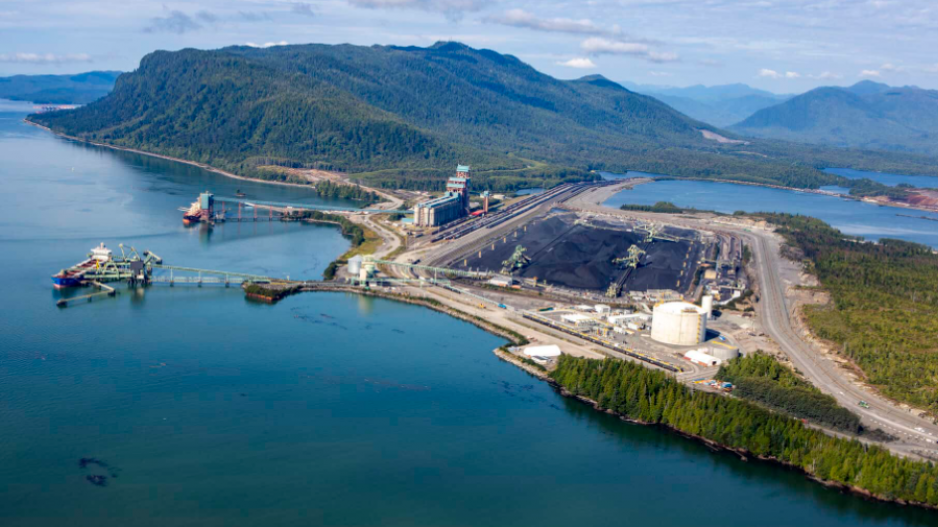The federal government is investing $75 million towards the building of a second berth at Prince Rupert’s Trigon Pacific facility – formerly known as Ridley Terminals – for “clean-energy export,” officials said today.
Trigon CEO Rob Booker said that – with the newly announced investment from Ottawa – work on the new $165-million berth in the northeast B.C. city will begin within weeks and is anticipated to handle shipments as soon as 2026.
“We plan to move fast on this project,” Booker said. “... “In short, we have the attributes needed to become one of Canada’s premier green energy export hubs. As of today, we have the funding needed to build out the fundamental infrastructure.”
Dubbed B2BC – “Berth to Beyond Carbon” – the new Trigon Pacific berth will roughly double the facility’s operational capacity. The terminal primarily handles coal in its current form, but that’s slated to change as the global focus shifts to cleaner energy sources, officials said.
That direction fits Ottawa’s policy trends. According to federal transport minister Omar Alghabra, the investment will be sourced from Ottawa’s $4.6-billion National Trade Corridors Fund that has been previously earmarked towards improving Canada’s transport infrastructure.
“The new berth will allow more ships at dock at the Port of Prince Rupert, and will be used to export products that support clean energy to global markets,” Alghabra said. “Investments like these will help us meet our commitment to build an economy that works for everyone.”
He added that improving infrastructure at Prince Rupert is also in-line with the recent report from the federal Supply Chain Task Force looking to re-enforce Canada’s trade links in light of climate-change disruptions in the last year – several of which occurred in B.C.
Neither Trigon nor Alghabra mentioned exactly what products will be shipped through the new berth, but Port of Prince Rupert officials have repeatedly mentioned the federal phase-out of thermal coal exports by 2030 coal in favour of exports like wood pellets and ammonia.
Ammonia has garnered much industry attention because it is a carrier for hydrogen, an alternative fuel that is currently gaining traction and governmental support in a number of Asian markets like South Korea.
Booker, however, noted that coal will not completely fall by the waist side, as he anticipates metallurgical coal to remain a strong part of Trigon’s export-handling mix “for decades to come.”
Rather, the new berth allows for more diversity of in the type of shipments the terminal will handle, whether it be wood pellets or ammonia. He added that, by having the port facility now scheduled to be in place by 2026 for ammonia exports, it solidifies the export infrastructure chain linking producers elsewhere to ship through Prince Rupert to Asia.
“It’s a little bit of the chicken and the egg situation, as you can imagine,” Booker said. “There are places they [producers] can now load ammonia or other net-carbon-reduction products to railcars, but they still needed a place to go. We’re now saying to them that you’ll be able to export it across the ocean, and now we just need to see some people making investment decisions to commit on the land side of the equation.”
In August, CN Rail and Alberta’s Keyera entered into an MOU to explore a clean energy terminal in that province – an example of the type of shipments Trigon’s berth 2 could be handling after completion.
“The mix of energy and other commodities that we ship from our terminal will most certainly change in the years to come, probably much faster than we would have even seen just a couple of years ago,” Booker said. “But our advantage as Canadians remain steadfast.
“We are served by a highly efficient, underutilized rail corridor. We have available space to build, diversify and expand our commodities. We have a highly skilled workforce that is deeply committed to the terminal’s success. And we have great proximity to Asia – we are closer to markets like Tokyo and Seoul than any other Canadian port or any of our international competitors.”



